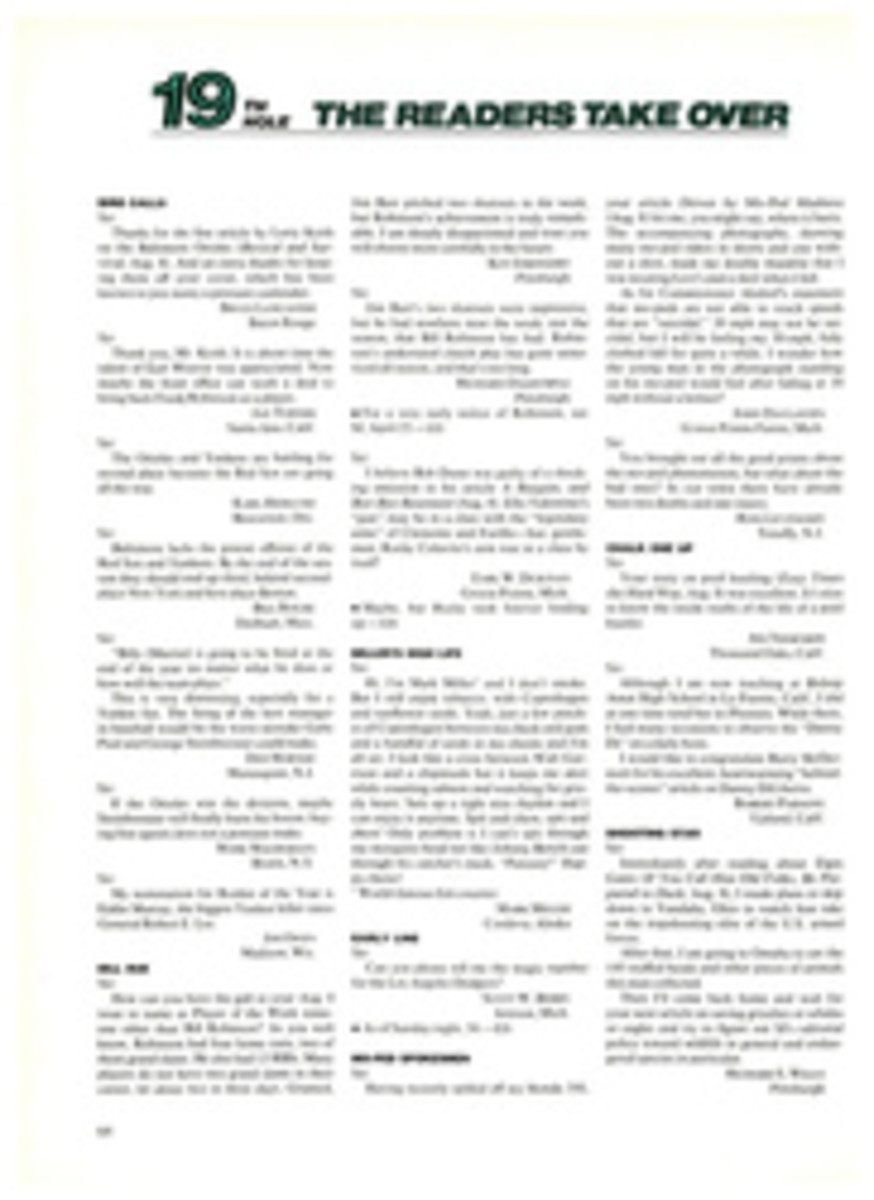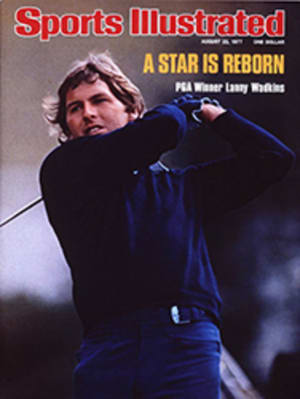
A game any number can play
When Harry Hopman decided this spring that his tennis hopefuls needed more conditioning than they were getting on the courts, he put them on a hocker field. When the University of Bridgeport neglected to include hocker in its 1977 intramural program, the students protested until hocker was added. When the national Boys' Clubs of America discovered hocker this summer, the game was soon introduced to its 1,100 affiliated clubs. School systems in California, Connecticut and Florida began playing hocker last semester. Miami-Dade Junior College had its own hocker clinic, as did Southern Connecticut State College. Five physical-fitness and athletic journals have recently published articles hailing hocker as a superb conditioner, and the Muscular Dystrophy Association will stage a celebrity hocker game this fall.
Hocker? Yes, hocker, and to listen to some of its proponents, goodby to soccer, volleyball, basketball, jogging and the Monday Night Game of the Week. Hocker has something for everybody, they say. It is fast, fun, easy to learn, simple to score, suited to all ages, sizes, sexes and skills, requires minimum equipment and expenditure and can be played on any terrain, indoors or out. So far they do not claim it will clear up dandruff and cure the common cold, but the game is still in its infancy.
The rules of hocker admittedly have been drawn from several other sports. It incorporates basketball's dribble, soccer's footwork, volleyball's punch, football's kick and a tennis-like scoring system. But unlike some of the games that inspired it, hocker has no time-outs, no clocks and very few referees' whistles. It is, according to John Henry Norton, the sport of tomorrow.
Hocker first took shape in Norton's lively imagination about 20 years ago, when he was looking for a game that could satisfy the competitive urge of his entire family. "When kids are small," he says, "it is difficult to find a game you can play with them that they can be successful at right away, and that you can enjoy playing, too."
At the time, Norton's family consisted of his wife Marjorie, and their seven children, ranging from tots to teen-agers. Since then the clan has been increased by the birth of two additional Nortons and the adoption of five others of Chinese, Vietnamese and Indian origin. Although the family is still too small to field two formal hocker teams of nine players, the game can be played informally with any number. Once 35 enthusiasts turned out for one of Norton's regular weekend games on the 100-by-60-yard hocker field in front of his Fairfield, Conn. home, and everybody lived to tell about it.
"That's one of the great facets of hocker," says the 52-year-old Norton, who has made a fortune as a lawyer and a pharmaceuticals and real-estate entrepreneur. "It is rough enough to be exciting, but not rough enough for anybody to get hurt. The ball [a standard 16-inch rubber playground ball] is soft so that even if someone is hit in the face with it, no damage is done."
Hocker goals are scored from both sides of two portable white plastic 9-foot goalposts that are set 60 yards apart. The ball may be propelled by hand, foot or by any other means, over, under or between the two horizontal bars on the goalposts. A goal counts from one to five points, depending upon how it is made. Seven points wins a game; two out of three or three out of five games wins a set.
"The only other equipment you need is a pair of sneakers," Norton says. "Tackling is not allowed, and only one-arm pushes are permitted, so there is no need for cleats, helmets or pads. That's important, because I've seen a lot of injuries caused by the very equipment that was supposed to prevent them."
Norton speaks from experience. A fullback, he captained the 1942 Columbia College freshman football team and, after transferring to Cornell, made the Big Red varsity as a sophomore, only to be put out of action for most of that season by a knee injury caused by his cleats. At various times in his athletic career he also played baseball and hockey and boxed, a fact that is evident from the spread of his nose. At 5'7" and 168 pounds, he is square of build and in excellent shape, which he maintains by daily jogging and wind sprints and weekly hocker sessions.
Norton grew up in the State Street extension section of Fairfield, which is a long way down the economic ladder from his 14-acre estate on North Cedar Road. "We never had any money," he says, "but there was always a big crowd hanging around our house."
As there is in his own. Children and animals seem to be everywhere. Before the Saturday morning hocker game, an army of Nortons appears to vacuum the house, wash the clothes and take care of all the other chores that must be completed before playtime. Jobs are listed on schedules displayed in the hallway, alongside tutoring schedules of comparable length. Norton has definite views on education. He believes much of what is being taught in schools today is a waste of time. In keeping with this philosophy, several Norton children were allowed to abandon formal schooling when it threatened to interfere with talents the family considered more important.
The most notable Norton dropout is 20-year-old Beth, who in 1975 was ranked No. 1 among 18-and-under girl tennis players in the U.S. Now a fledgling pro, Beth has played at Wimbledon and Forest Hills. Tim Norton, 22, has also appeared on the pro tennis tour, but in recent months has devoted much of his time to coaching Beth and one of his adopted sisters, Sue Ming, who is playing the junior New England circuit.
"Tennis was considered a sissy game when I was growing up," says John Norton, who was 43 when he first swung a racket, "but then I learned that tennis, like hocker, was another game we could all play and enjoy."
No sooner had he taken up tennis than Norton installed an outdoor court and equipped it with lights. Then when New England winters began cutting into the family's court time, he built one of the handful of private indoor courts in the country. From the outside, it looks like a colonial dairy barn. Inside it is spectacular, clearly worth its $150,000 price tag. Three ball machines are on the sidelines along with several shopping carts of balls and a scale model of a hocker field outfitted with miniature goalposts, grandstands and tiny plastic players.
The model is part of a presentation Norton is currently making to corporations, in the hope that one of them will decide to promote hocker worldwide. "All sports have to start somewhere," he says. "A hundred years ago there was hardly any baseball or football. I've watched hocker develop from a strictly family game to a team sport, and I am convinced that someday it is going to be bigger than either baseball or football."
That is a pretty big order, but then, Norton is accustomed to doing things in a pretty big way.
PHOTO
With a hocker goal in the background, Ref Norton spots the 16-inch ball on his front-lawn field.

